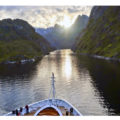
It was billed as a chance to check traps and find a king crab to cook for lunch. But for our group from Seabourn Ovation in the tiny town of Honnigsvag in Norway’s far north, it turned out to be a much wilder adventure than that.
Our first stop was the shop of an adventure tour company that features rentals of off-road vehicles for heading out into the wilderness near the North Cape. We were going out to sea in very small boats, the guide explained and he started handing out bright red flotation survival suits that covered us head to toe.
“Just a precaution, but if you get tossed into the water here you could end up with hypothermia in minutes if you aren’t protected,” Ralf, our guide said. There was more chance of that than I thought. We were heading to the crab fishing grounds on tiny inflatable RIB boats, the kind Navy Seals use to do stealth raids on enemy islands. I was on one that had room for just six people and seated on the inflated edge of the boat with only had a rope for a hand hold.
“Hang on, in case it gets a little rough out there. Let me know if we’re going too fast,” Ralf said reassuringly. Although the waves weren’t rough, it was raining. It’s a good thing the coverall suit included a hood because at the speed we were going each drop feels like a pellet of ice hitting your face.
After about 20 minutes the rain had stopped and we pulled up at a red float in the water far from the coast. The crabs I imagined scuttling along the shore are actually king crabs that live at depths of up to 300 feet below the surface and the traps which I’d thought might be the size of fruit baskets were actually as big as a car trunk.
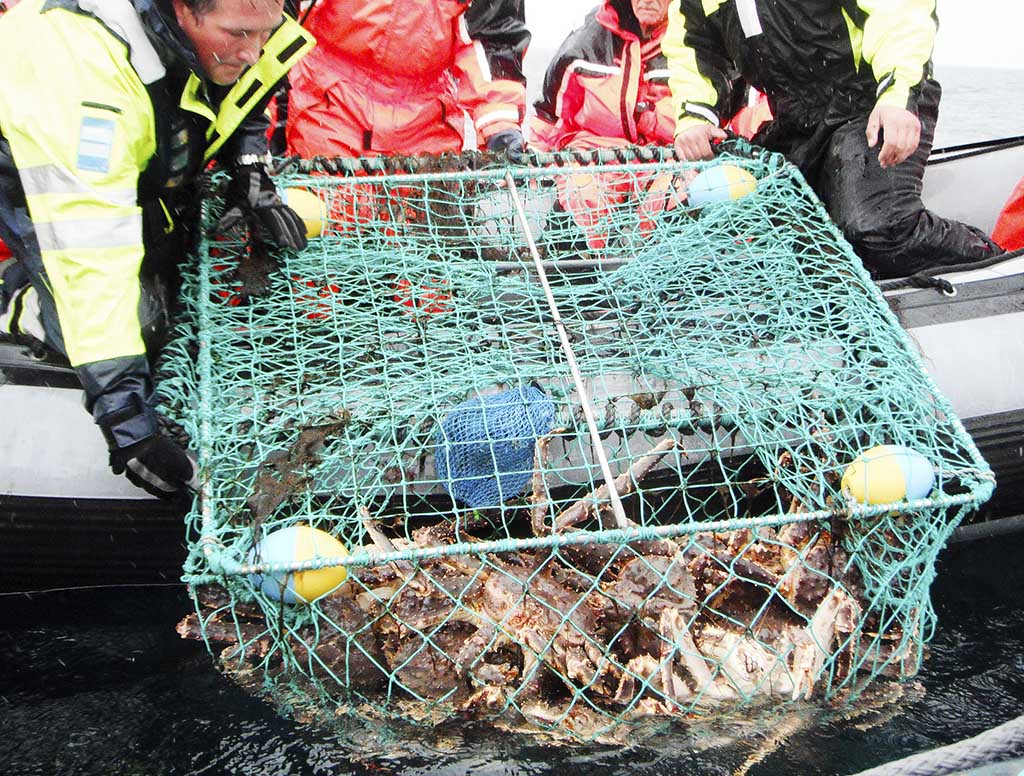
Pulling up a load of nearly two dozen crabs that can weigh up to 10 pounds each takes a group effort heaving on the rope. I thought, we’d catch a couple here and then head in to cook other crabs they caught somewhere else. But when the trap came to the surface, it was clear that lunch would be a fresh-caught feed. There was a huge jumble of crabs in the trap and when they were dumped out into the boat they formed a mass of flailing legs.
It turns out that king crabs aren’t even native to the waters off northern Norway. The red king crab was originally native only to the north Pacific around Russia’s Kamchatka Peninsula and its neighboring Alaskan waters. But Soviet scientists introduced the species to the Barents Sea near the border with Norway in the 1960s, hoping to expand the potential yield from local fisheries.
Since then, crabs have spread their range south along Norway’s Arctic coast and have been anything but an endangered species. It’s gotten to the point where Norwegian fishermen see them as a nuisance not so much because they eat fish but because the crabs rip their trawling nets when they get caught.
Crabbing has become a new fishing industry for Norway. The quota for king crab catches along the coasts is now set at 1,250 tons–about half a million crabs–and even that isn’t enough to keep them from spreading south. If today’s catch of 20 in one trap is any indication, there are plenty of them out there.
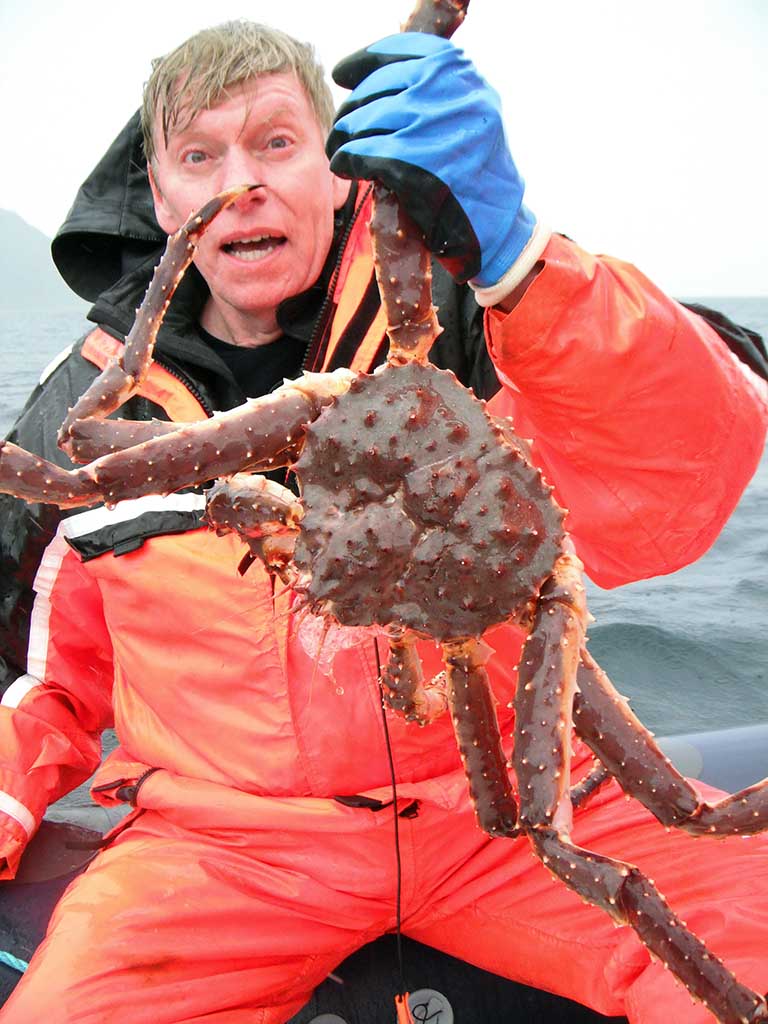
They’re ferocious looking as they’re dumped into the boat. Their eight long, spiny legs end in black tips that look sharp but turn out to be rounded at the end. Still we keep a wide berth until they settle down a bit–as they say: you could poke an eye out if you’re not careful.
The trap is re-baited and sent down to the bottom again and we head in to shore to sample our catch. Landing the boats turned out to be trickier than we expected because the tide had gone out and even our flat-bottomed boats rode too deep in the water to be able to get to any of the docks near the shore-side village where our lunch was being prepared. We had to tie up to a dock at the other side of the bay that had a boat launching ramp and unload there.
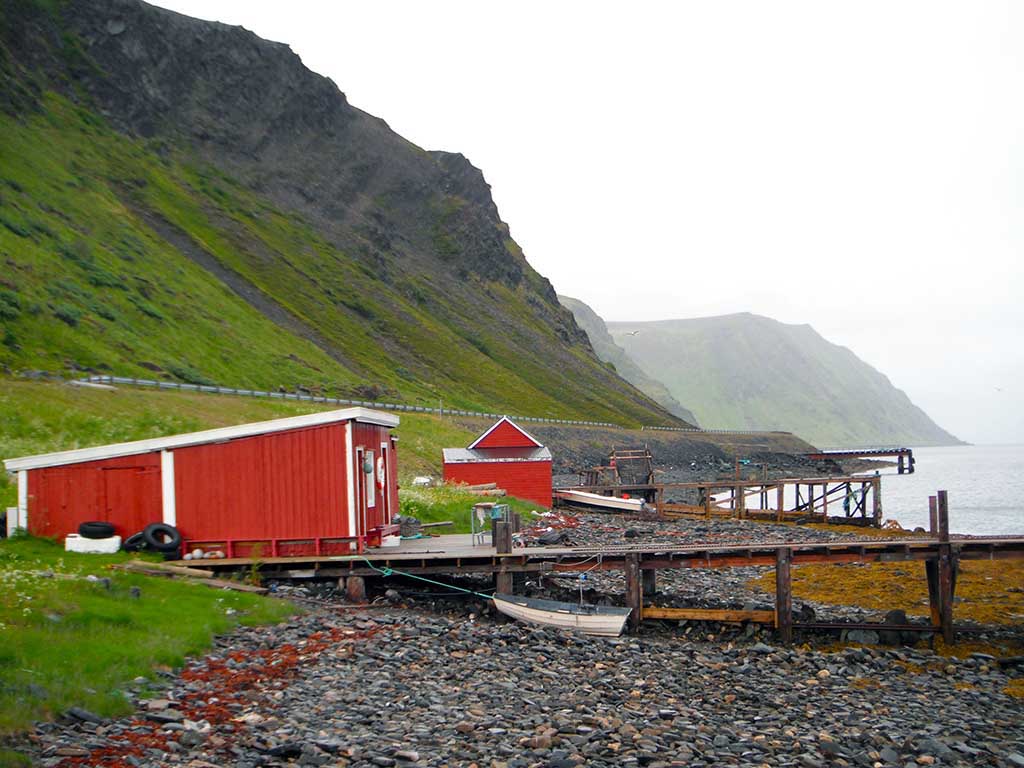
The only way to get the crabs to the lunch was to carry them and I volunteered to carry two. It was my workout for the day because I had to carry the crabs that weighed up to 10 pounds in each hand by grasping tightly to their front legs and holding them away from my body on the 15-minute walk along a slippery path.
When we got to a tent in the style of the nomadic Sami people, I had worked up a thirst and had a beer while the crew set about cutting up the catch for cooking.
The traditional tents the Sami call lavvus are similar to the teepees of North American Indians. Long poles are lashed together at the top and form a broad cone that’s covered with animal hide or canvas. Inside, benches arranged around a fire pit are covered with reindeer pelts. A big blaze provides plenty of heat but also a fair amount of smoke, which fortunately vents through the open top of the tent.
It’s all very primitive feeling when they bring in a big iron kettle filled with water and place it over the roaring fire. The staff does all the work of cutting up the crab legs, claws and bodies and preparing the crabs and potatoes and bread that go with them.
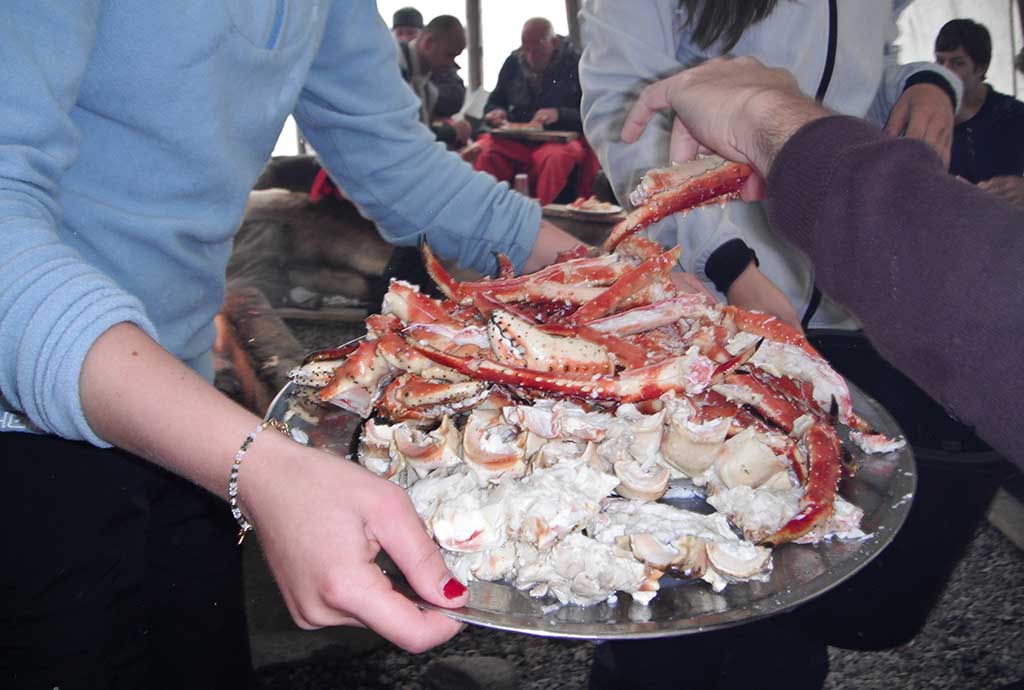
Fresh crab doesn’t require much cooking, in less than 10 minutes after it’s put in the boiling water, it was ready and there were heaping plates of crab so we had all we could eat. I’ll never forget the remarkable tenderness of the meat in the legs. It had been less than two hours from sea floor to table. I know I’ll likely never have fresher crab. I went for third helpings because the meat is so rich and flavorful.
My memento of the trip was the scent of smoke from the Sami tent that lingered in my coat even a week later. By that time I was wishing I had more of the crab that went with it.




